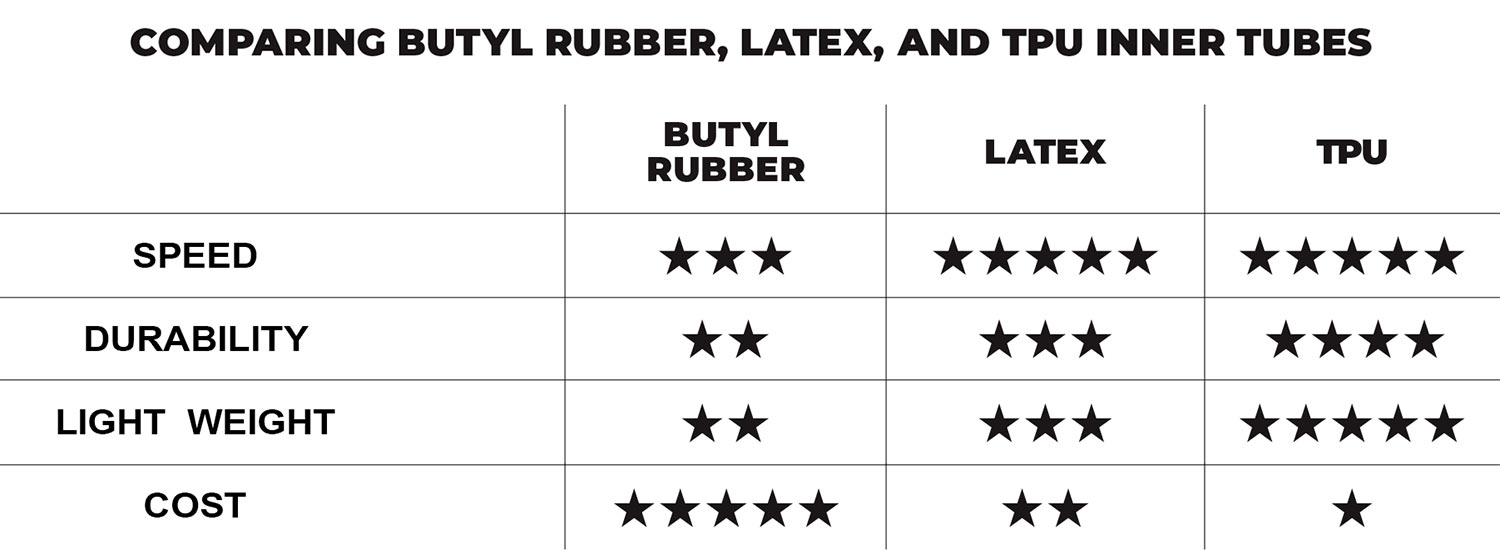Vittoria continues their mission to bring clarity to bicycle tire tech, now with a White Paper explaining the pros & cons of the 3 main types of inner tubes – Butyl, Latex & TPU. Sure tubeless has come to dominate much of modern road, gravel & mountain bike tires, but the majority of bicycles out in the world still have inner tubes in their tires. And with road Grand Tours and even Spring Classics being raced and won on clinchers, tube tech is still worth a deeper dive…
S0, how do you choose?
Vittoria: Bike Inner Tube Types Explained

This is the second in the Vittoria White Papers explainer series – following up January’s “Bicycle Tyre Types and Systems“. And the idea is the same… try to clear up some common confusion around different types of on-road tire and off-road tire setups in order to give cyclists enough information to make more informed purchasing decisions based on what is going to be best for them and their type of riding.
So, for everyone out there riding with inner tubes in their clincher tires, or just looking to carry a spare tube when a roadside tubeless repair won’t work, this primer should help pick the best tube for you…

Pretty much every modern bike has pneumatic tires, and while many have gone tubeless, most still have inner tubes inside. Tubes are just simpler and cleaner to install, don’t require much technical skill, and work pretty well across a wide range of bike riding styles. Plus, they are easy to replace or even patch in most cases if you get a flat, are small & light enough that it’s easy to carry a spare, and they are typically a low-cost item to replace.
The three basic types in use are synthetic butyl rubber (classic black), more premium natural latex rubber (in a number of light & pastel colors), and the most expensive thermoplastic polyurethane, i.e. TPU (in a few translucent, or often vibrant colors).
Vittoria’s White Paper goes pretty deep into the inner tube, its history on bikes, and why you might choose tubes vs. tubeless.
In-house Testing Comparisons
But they also evaluate the key performance differences between each tube type, and did a bit of in-house testing to suggest how they compare. Unsurprisingly based on everything we’ve read in recent years, the heavier standard butyl tube has the highest rolling resistance of the three, and is a bit more susceptible to pinch flats & punctures. It’s even the most resistant to heat build-up, and has the longest lifespan inside your tire, most likely.
Latex comes in the middle in terms of weight and puncture resistance, but is just as good as TPU for lowering rolling resistance.
That leaves TPU – the newest technological advance in bicycle inner tubes – as the fastest rolling, the most durable, and the lightest weight. It also appears to be more sustainable as it requires less raw material and is readily recyclable.
So what’s the downside of TPU then?
Price of course. Vittoria’s own butyl tubes start at $8, latex at $16, and TPU tubes at $35. Each newer material is 2x as expensive as those below it, a big step up in cost to get relatively small gains. Then again, upgrading a pair of TPU tubes is a relatively low-cost way to improve the performance of your bike in the grand scheme of things.
Free watts aren’t really free. But for $70 this could get you lower rotational weight, lower rolling resistance, and improved durability if you are replacing the stock butyl tubes already in your bike. And those old tubes can still be a functional spare if you do flat the fancy TPU tube in the future.
Of course, Vittoria’s White Paper perspective skews towards their own products, but the same assumptions can be made for just about any other tube manufacturer.
And Vittoria did just release their new Ultra Light Speed TPU tubes this summer. Yet there are plenty more TPU inner tube options from Tubolito, Schwalbe, Pirelli, RevoLoop & several more… and they come in varying sizes and thicknesses to suit everything from road to gravel to cyclocross to MTB to city commuter bikes.
Read the full White Paper PDF to find out more, and keep an eye out for future tire tech explainers at: Vittoria.com/ww/en/White-Paper



